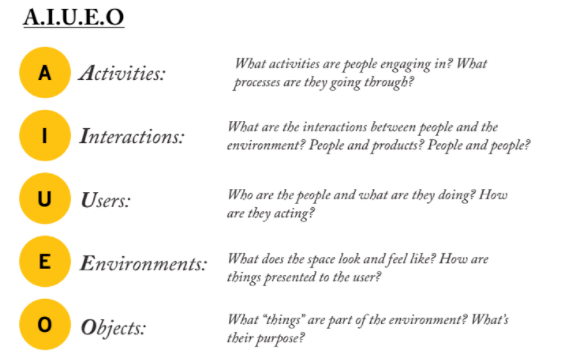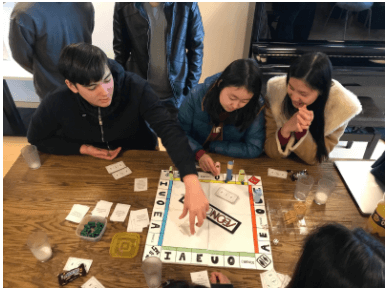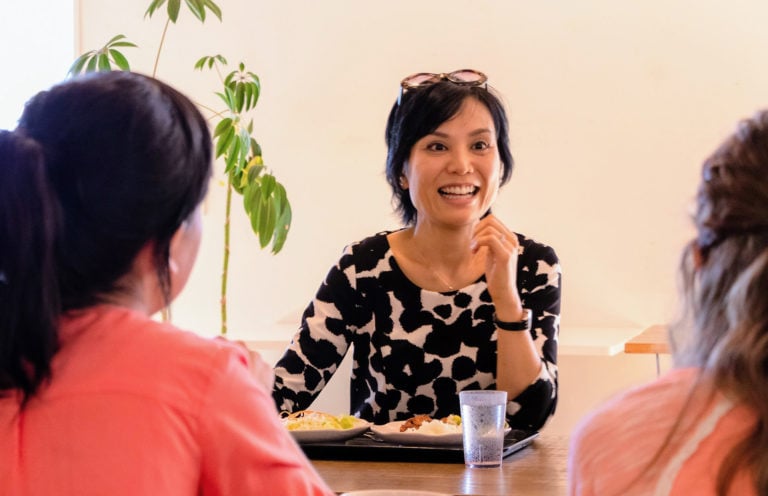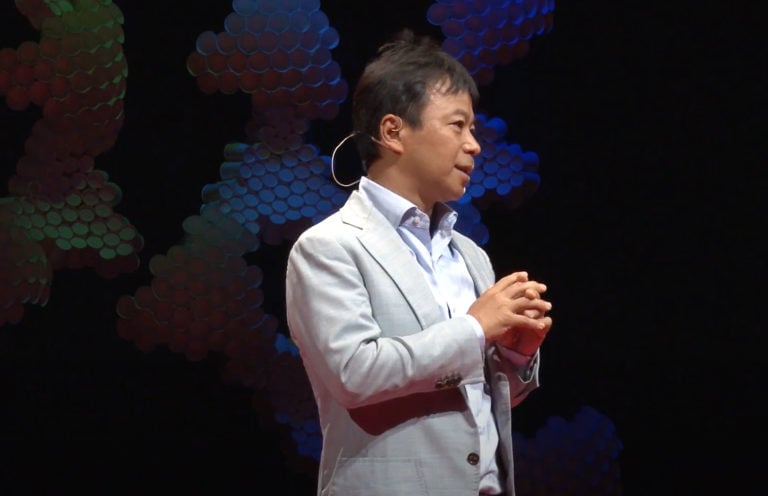 Written by Brendan McGibbon
Written by Brendan McGibbon
Mr. McGibbon teaches music and design innovation at UWC ISAK Japan. He is also our activities coordinator.
Our Grade 10 ‘Leading with Others’ class (also known as Design Innovation) is all about creating sustainable change! As far as I know, this course is unique to UWC ISAK Japan and I’m really happy to be part of it. Our class time for the last 3 weeks has been spent becoming more aware of challenges we observe in the world around us.
Recently we adopted a technique created by the world-famous design firm: IDEO. IDEO are the champions of Design Thinking and good friends of UWC ISAK Japan. Students left campus a few Friday’s back to explore the Aeon Mall and the train station in Saku to observe and discover where innovation can be found.
Students were separated into teams and they used the framework below to observe different viewpoints and develop insights.

As you can see…. this framework allows you to walk into any environment and observe it from multiple dimensions. This exercise builds ‘awareness’ and this is one of the leadership skills we value at UWC ISAK Japan.
Once the students had gathered their data they were asked to make a ‘Customer Experience Map’ to display the information in a creative, visual way. As a teacher I have not tried this experiment before and I enjoyed the ambiguity of not knowing how it would turn out. I think an open mindset is important in teaching and student revel in being pioneers and exploring new ways of learning.
So… how did our teams display their findings?
1) AEONOPOLY

‘Aeonopoly’ (Saku Edition) Is a brand new board game!!! Roll the dice and move through the board and you will land on different areas of the Aeon Mall. When you land on a square you are asked to read a card that has an insight written on it. (An insight is a key understanding about something). You then have 30 seconds to ideate 3 good solutions – no pressure! If you are successful you get a house and if not the next player gets a turn. The students played through the game and improved on their game prototype. It’s a great idea to practice generating new ideas.
2) INFOGRAPHICS
 These two infographics display information very differently. The first infographic, designed using Adobe Illustrator has an excellent example of a ‘customer map’. The map is super creative as it maps the experience in a really innovative way. Essentially it is not geographical in that it maps an experience from entrance to exit – with realisation that there are multiple entrances and exits. Conceptually this is very advanced and it reminds me of the London Tube map – a design Icon!
These two infographics display information very differently. The first infographic, designed using Adobe Illustrator has an excellent example of a ‘customer map’. The map is super creative as it maps the experience in a really innovative way. Essentially it is not geographical in that it maps an experience from entrance to exit – with realisation that there are multiple entrances and exits. Conceptually this is very advanced and it reminds me of the London Tube map – a design Icon!
The second customer map was innovative in the use of QR codes to guide the viewer through the infographic and provide extra important information. Students made a Youtube video narration which is both hilarious and very insightful – a wonderful combination! The second QR code links to a website to provide more in-depth information. Students designed it so you would invest more time and effort in understanding the insights and needs of customers at Aeon mall. This was clever as often the more time you spend invested in an activity the more you value it – this is called escalating commitment.
Although our maps were super creative in reflection we did notice that improvements could be made. We shared as a class our successes, challenges and new learnings. Memory is short so we documented key learnings in our journals so our next challenge builds our capacity.
Creating positive change begins with awareness. As one student reflected: “With the activity of AEON mall observation, I realized that slowly I started becoming aware of what’s happening around me. I learned that with observing, I found problems and recognized that you need creativity to find a solution to the problems. Not all the problems can be solved by only one person, therefore I had to connect with other people to get ideas and use them.”
Opportunities to create positive changes are everywhere, and it starts with being observant, being curious, and reframing problems we encounter into opportunities. This is exactly what our students are practicing.




